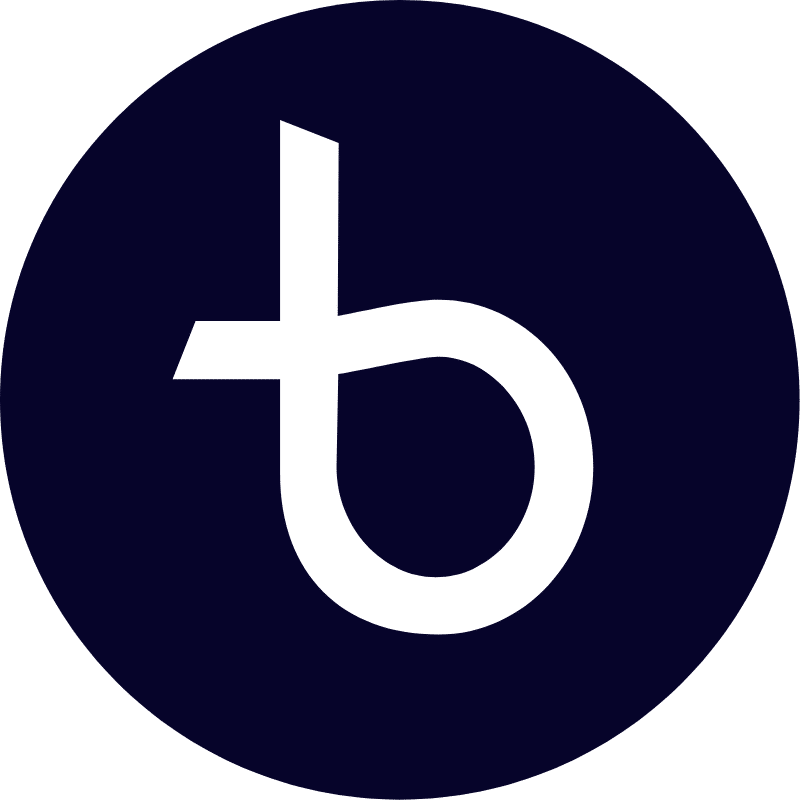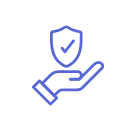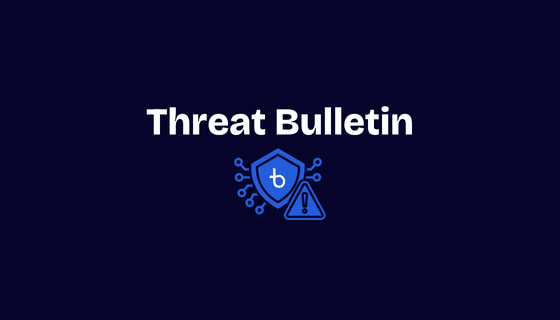
The massive cyberattacks on Change Healthcare and Ascension Medical have profoundly impacted the healthcare industry due to the far-reaching impact that massive health systems and supply chain conglomerates can have on people, highlighting vulnerabilities and prompting critical discussions about enhancing security practices. This article will analyze the two breaches based on what is known at the time of this article’s release and will offer some suggestions and insights into the future of healthcare cybersecurity.
Let’s start with the Change Healthcare Breach.
In early 2024, Change Healthcare, a prominent provider of revenue cycle management services, faced a significant data breach. The incident had far-reaching implications, affecting a multitude of healthcare providers and their patients across the United States.
Timeline of Events
Here’s a rundown of the key dates and events related to the Change Healthcare breach:
- February 21, 2024: Change Healthcare discovered the cyberattack.
- March 1, 2024: Public announcement and initial details shared.
- March 31, 2024: Change Healthcare started sending out breach notifications.
- April 5, 2024: Over a month later, more information about the breach was still being uncovered.
- June 20, 2024: Most affected entities were notified about the compromised data.
- June 21, 2024: Final breach notifications were due under HIPAA regulations.
Scope of the Breach
The breach had a staggering impact on the healthcare sector:
- Records Affected: Over 5 million patient records were exposed.
- Types of Data Compromised: The stolen data included patient names, dates of birth, Social Security numbers, medical histories, and insurance information.
- Affected Entities: Both healthcare providers and insurers that utilized Change Healthcare’s services were impacted.
Initial Discovery and Response
When Change Healthcare first noticed unusual activity, the discovery set off an immediate response:
- Discovery: On February 21, 2024, internal security systems identified the unauthorized access.
- Immediate Actions:
- Containment: Efforts were made to isolate the affected systems.
- Investigation: An internal investigation was initiated, along with consultations from cybersecurity experts.
- Notification: By March 1, Change Healthcare disclosed the breach to the public and began notifying affected entities.
- Mitigation: Steps were taken to enhance security measures, including system upgrades and additional staff training.
The breach at Change Healthcare is a stark reminder of the vulnerabilities in the digital age and the critical need for robust security measures. It underscores the importance of quick response and transparent communication in managing such incidents.
Overview of Ascension Medical Breach
In May 2024, Ascension Medical, a large healthcare system in the U.S., experienced a severe cyberattack. The breach affected patients and operations across its numerous facilities, prompting urgent responses and investigations.
Timeline of Events
Here’s how the events unfolded:
- May 8, 2024: Ascension Medical discovered unusual activity in their systems.
- May 9, 2024: The breach was publicly acknowledged, stating that systems were compromised.
- May 13, 2024: Ascension reported that there was no clear timeline for full system restoration.
- May 30, 2024: Two class-action lawsuits were filed on behalf of affected patients.
Scope of the Breach
The breach was extensive, impacting a significant number of records and data types:
- Records Affected: Approximately 3 million patient records were compromised.
- Types of Data Compromised:
- Patient names
- Addresses
- Dates of birth
- Medical histories
- Social Security numbers
- Insurance details
This breach disrupted operations in 140 hospitals across 19 states, indicating its vast scope.
Initial Discovery and Response
The response to the breach was both swift and comprehensive:
- Discovery: Ascension’s IT team discovered the breach on May 8, 2024, when they noticed irregular activities within their network.
- Immediate Actions:
- Containment: Ascension immediately worked to isolate affected systems to prevent further damage.
- Notification: Patients and regulatory bodies were informed about the breach promptly.
- Investigation: Cybersecurity experts were brought in to understand the breach’s nature and impact.
- Mitigation Efforts: Measures included:
- Increasing security protocols
- Enhancing system monitoring
- Providing identity protection services to affected patients
The Ascension Medical breach highlights the vulnerabilities in healthcare cybersecurity and underscores the need for immediate and effective response strategies.
Root Cause Analysis of Change Healthcare Breach
The Change Healthcare breach was a significant event that exposed major vulnerabilities in the healthcare cybersecurity landscape. Understanding the root causes of this breach is essential to prevent similar incidents in the future.
Technical Vulnerabilities
The breach at Change Healthcare highlighted several technical weaknesses:
- Inadequate Remote Access Authentication: One of the primary technical flaws was the absence of strong remote access authentication protocols. This weakness allowed attackers to gain unauthorized access to the system.
- Weak Security Infrastructure: Experts from Northeastern University pointed out that Change Healthcare’s overall security framework was not robust enough. This included outdated software and insufficient network segmentation, which made it easier for attackers to move laterally within the network.
- Unpatched Systems: There were reports of unpatched software systems that left known vulnerabilities open, providing an entry point for attackers.
- Lack of Multifactor Authentication (MFA): Another vulnerability was the failure to implement multifactor authentication (MFA) for critical systems. MFA adds an additional layer of security by requiring more than one authentication method. Additionally, MFA may have been skipped because compensatory controls were in place for servers running older technologies that have been updated. Change Healthcare had a policy requiring an MFA, but unsurprisingly, the board was unaware of the risks of not having an MFA and approved the compensating controls.
These technical vulnerabilities created an environment where attackers could exploit weaknesses and gain access to sensitive data.
Human Factors
Human errors and insider threats also played a crucial role in the Change Healthcare breach:
- Lack of Training: Insufficient training on cybersecurity best practices left employees ill-prepared to recognize and respond to potential threats.
- Insider Threats: There were concerns about insider threats, where individuals with legitimate access to the systems abused their privileges. This exacerbated the impact of the breach.
- Delayed Response: The initial response to the unusual activity was slower than ideal. A delayed response can give attackers more time to infiltrate and exploit the system further.
These human factors underscore the importance of continuous training, robust security policies, and vigilant monitoring to mitigate the risk of breaches.
Understanding these root causes is vital in strengthening cybersecurity measures and protecting sensitive healthcare data.
In the next section, we will examine the root causes of the Ascension Medical breach for a comprehensive comparative analysis.
Root Cause Analysis of Ascension Medical Breach
Let’s break down the main factors that led to this significant breach.
Technical Vulnerabilities
Several technical weaknesses were exploited during the Ascension Medical breach:
- Outdated Software: Some systems were running outdated software with known vulnerabilities that had not been patched. This created easy entry points for attackers.
- Poor Network Segmentation: The lack of proper network segmentation allowed the attackers to move freely within the network once they gained access. Once inside, they could easily reach critical systems and data.
- Weak Access Controls: Ascension’s access control measures were insufficient. This included weak passwords and a failure to implement multi-factor authentication (MFA) across all critical systems.
- Unsecured Remote Access: Remote access points were not adequately secured. This was a critical issue, especially with many employees working remotely, which provided more opportunities for attackers to infiltrate the system.
These technical vulnerabilities made it easier for the attackers to penetrate Ascension Medical’s systems and gain access to sensitive patient information.
Human Factors
Human errors also played a significant role in the Ascension Medical breach:
- Phishing Attack: The breach started with a phishing attack. An employee unknowingly downloaded a malicious file, which gave the attackers the necessary foothold to infiltrate the network.
- Lack of Cybersecurity Training: Many employees were not adequately trained to recognize phishing attempts and other cyber threats. This lack of preparedness made it easier for attackers to exploit human weaknesses.
- Insider Threats: While not confirmed, there were concerns about insiders who might have facilitated the breach, either intentionally or unintentionally.
- Slow Response: The initial response to detecting unusual activity was slower than it should have been. This delay allowed the attackers to cause more damage before containment efforts were fully implemented.
By not addressing these human factors, Ascension Medical inadvertently made it easier for the breach to occur and escalate.
Understanding these root causes is crucial for improving cybersecurity defenses and preventing future breaches in the healthcare sector.
Comparative Analysis of the Change Healthcare Breach and Ascension Medical Breach
Both the Change Healthcare breach and the Ascension Medical breach serve as critical lessons in cybersecurity for the healthcare industry. By examining common technical vulnerabilities, human factors, and key differences, we can gain valuable insights into how these breaches occurred and how similar incidents might be prevented in the future.
Common Technical Vulnerabilities
Both breaches revealed several shared technical weaknesses that were exploited by attackers.
- Outdated Software: Both Change Healthcare and Ascension Medical had systems that were running outdated software. This left known vulnerabilities open to exploitation.
- Weak Access Controls: Both organizations had issues with access control. Weak passwords and the absence of multi-factor authentication (MFA) were significant gaps in their security.
- Poor Network Segmentation: In both cases, the lack of proper network segmentation allowed attackers to move laterally within the network after gaining access.
- Unsecured Remote Access: With the increase in remote work, remote access points were not adequately secured in either breach, providing easy entry points for attackers.
These shared vulnerabilities highlight the importance of regular software updates, strong access control policies, network segmentation, and securing remote access points in any organization’s cybersecurity strategy.
Common Human Factors
Human errors also played a crucial role in both breaches. Various shared factors contributed to the cyberattacks’ success.
- Employee Negligence: In both instances, employees did not consistently adhere to security protocols. This includes updating passwords and being vigilant against phishing attacks.
- Lack of Training: Employees at both organizations lacked proper training on cybersecurity best practices. This left them ill-prepared to recognize and respond to potential threats.
- Phishing Attacks: Both breaches began with phishing attacks. Employees unknowingly downloaded malicious files in each case, giving attackers a foothold within the network.
- Delayed Response: There was a delay in recognizing and responding to the breaches, which allowed the attackers more time to cause damage.
These human factors underscore the need for continuous cybersecurity training and awareness programs to ensure employees can mitigate potential threats.
Key Differences
While there were many similarities, there were also significant differences in the root causes of each breach.
- Breach Discovery and Response:
- Change Healthcare: The breach was discovered through internal security systems, and it took several days before the breach was publicly announced. The response was criticized for being slow.
- Ascension Medical quickly noticed unusual activity and publicly acknowledged the breach the next day. Industry leaders praised their rapid response.
- Impact Scope:
- Change Healthcare: Over 5 million patient records, including sensitive data like Social Security numbers and medical histories, were compromised.
- Ascension Medical: Approximately 3 million patient records were affected, but the breach also disrupted operations in 140 hospitals across 19 states.
- Mitigation Efforts:
- Change Healthcare: Focused on containment, system upgrades, and additional staff training. However, the recovery took a long time, drawing criticism.
- Ascension Medical: Implemented thorough mitigation efforts, including increased security protocols, enhanced system monitoring, and providing identity protection services to affected patients. Their proactive measures were well-received.
Understanding the key differences in how each organization handled their breach can offer lessons in both the effectiveness of rapid response and the importance of comprehensive mitigation strategies.
Healthcare organizations can better prepare and fortify their defenses against future cyberattacks by learning from these breaches.
Impact on Healthcare Industry
As healthcare breaches continue to affect millions, here’s how these incidents have influenced the sector:
Regulatory Changes
Both breaches have catalyzed significant regulatory discussions aimed at improving cybersecurity standards across the healthcare industry. Authorities have recognized the urgent need to strengthen defenses and reduce vulnerabilities.
- Mandatory Reporting: Proposals for quicker and more detailed reporting of cyber incidents to ensure prompt action and transparency.
- Stricter Compliance: Potential tighter compliance norms, including regular audits and mandatory cybersecurity training.
- Increased Penalties: Discussions about steeper fines and more severe penalties for non-compliance with new regulations to deter negligence.
- Government Initiatives: The U.S. government is contemplating substantial funding to help healthcare providers enhance cybersecurity measures and fend off future attacks.
Industry Best Practices
In response to these breaches, the healthcare industry needs to adopt several best practices to bolster cybersecurity, aiming to protect patient data and ensure the smooth functioning of medical services.
- Enhanced Employee Training: Regular cybersecurity training sessions are essential to help employees identify and respond to phishing attempts and other threats effectively.
- Basic Security Measures: Implementing basic security measures such as multifactor authentication (MFA), encryption, and endpoint security solutions should be standard practice.
- Regular Security Audits: Conduct frequent security audits to identify and address potential vulnerabilities before they can be exploited.
- Incident Response Plans: Develop and maintain robust incident response plans to ensure quick and effective action during a cyberattack.
- Collaboration and Information Sharing: Emphasize collaboration and sharing information about threats and vulnerabilities to help the entire sector stay informed and prepared.
- Risk Analysis for Change Windows: Routinely analyze risks associated with change windows and follow up on these risks within set timelines, such as every six months, to ensure ongoing security and adaptability.
- Threat Intelligence and Threat Hunting: Focus on threat intelligence and threat hunting to understand how exposed and unpatched vulnerabilities can be quickly exploited. This proactive approach helps in identifying and mitigating potential threats before they cause harm.
The healthcare industry’s response to these breaches reflects its commitment to protecting sensitive patient data and maintaining trust. By adopting these regulatory changes and best practices, the sector aims to build a more resilient and secure environment for all stakeholders.














